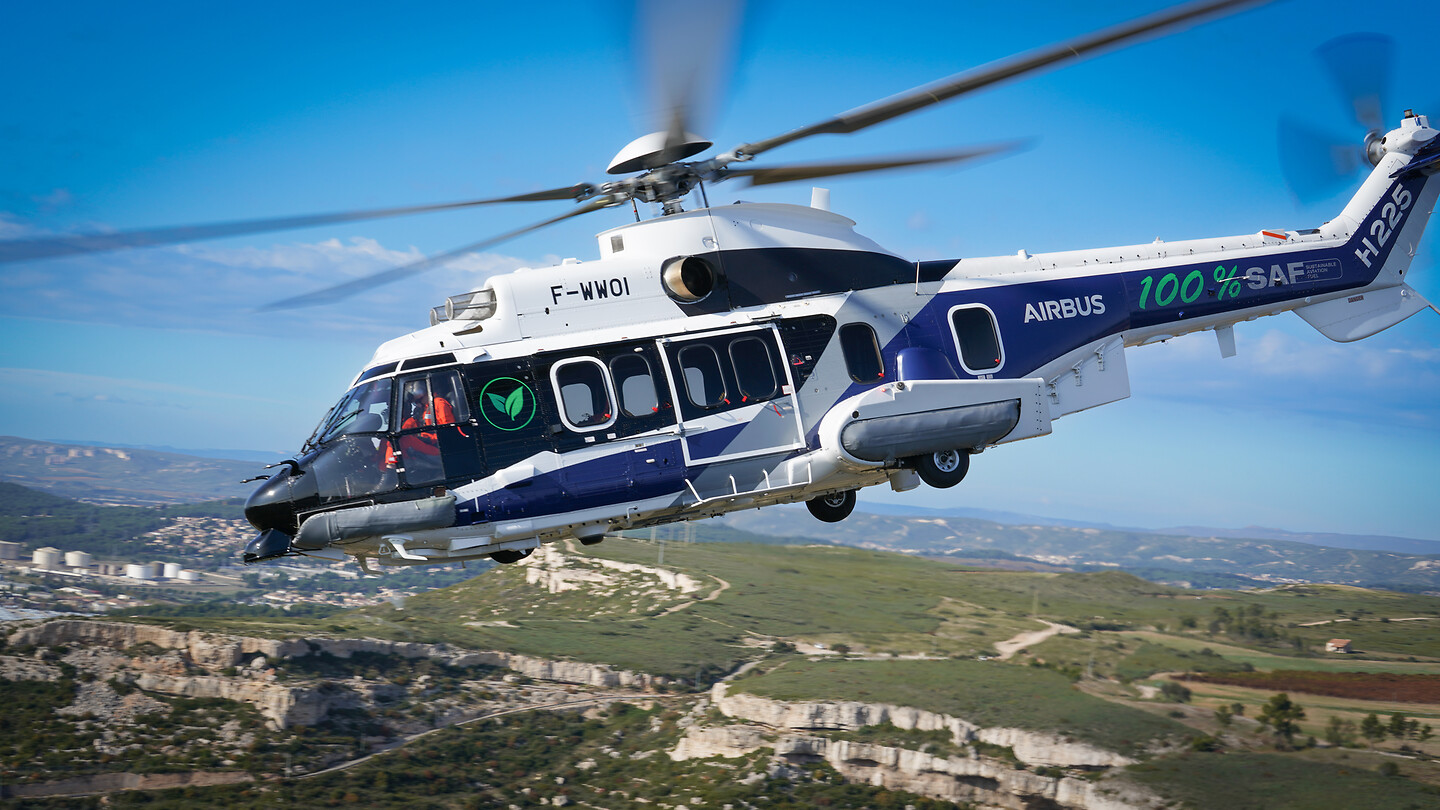Is it SAF? Yes. 100%.


We live in a world where helicopters can fly using 100% sustainable aviation fuel (SAF). People are now taking notice. Within the next nine years, nobody will think twice. At least this is the goal technical teams at helicopter OEMs, fuel producers and suppliers hope to achieve before the end of the decade.
Earlier this week, an Airbus H225 performed the first ever helicopter flight with 100% SAF, using one of Safran’s Makila 2 engines. The companies are aiming to assess the impact of unblended SAF on the helicopter’s systems. Specifically, “the impact of unblended SAF in the helicopter fuel systems, especially gauging the good fuel feed of the engine and the helicopter’s overall behaviour in the flight domain,” Jean Philippe Evrard, power systems architect at Airbus Helicopters tells Helicopter Investor.
Stefan Thome, executive vice president, Engineering and chief technical officer, Airbus Helicopters, said all Airbus helicopters are certified to fly with up to 50% SAF blended with kerosene. But the OEM hopes to certify 100% SAF usage before 2030.
“It is our ambition to have helicopters certified to fly with 100% SAF within the decade. Today’s flight is an important first step towards this goal”, said Thome.
The first tests for Safran’s Makila 2 engines were done in September, where the engine manufacturer found 80% reductions in CO2 emissions by using 100% SAF. The tests were completed using cooking oil from oil and gas company TotalEnergies.
A Safran spokesperson tells Helicopter Investor: “At Safran, we strongly believe in SAF fuels. They enable [us] to reduce carbon dioxide emissions by up to 80% during their life cycle. All our helicopter engines are already certified to be fuelled with a mix of 50% of sustainable aviation fuels.”
Airbus’s H225 test helicopter flew with an unblended SAF derived from used cooking oil, also provided by TotalEnergies, which offers a net 90% CO2 reduction compared with regular jet fuel.
Evrard tells Helicopter Investor: “The H225 was chosen because it has a two-split fuel reservoir and allows unblended SAF on one of the engines, while the other is fuelled by Jet A1. This also allows making a direct comparison between the engines’ behaviour, which is very convenient for testing.”
Thome added: “SAF is an important pillar of Airbus Helicopters’ decarbonisation strategy because it provides immediate CO2 reduction with no negative impact on the performance of the helicopter.”
Helicopters have been flying using various percentages of blended SAF for some time now. Earlier this year, a fleet of 20 Bell helicopters was the first to start using SAF – provided by Avfuel – for training missions. In June, a rescue helicopter operated by ADAC Luftrettung completed a mission using 40% blended SAF.
Some Airbus test and delivery flights in France and Germany are also being made using a percentage of SAF.
The key to industry-wide adoption is partnerships, Evrard says. “It is great to see there is a collective interest in developing the use of SAF in aviation. If we want to develop the use of SAF, it is key to bring the industry together. This is why Airbus Helicopters has launched a SAF User Group, dedicated to the rotary-wing community and which gathers helicopter operators, engine manufacturers and oil companies.”
Elsewhere, head of Airbus Corporate Helicopters (ACH) Fred Lemos said ACH is also making big investments in sustainability. “Our clients are increasingly sensitive to the topic and are looking to us bringing solutions to this challenge,” said Lemos.







